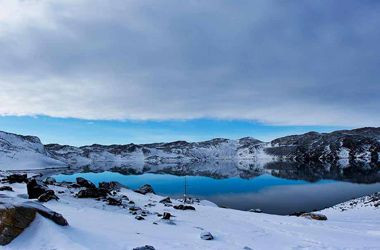'Promiscuous' Microbes Swap DNA To Survive Antarctica's Saltiest Lake [VIDEO]

A new study has found that microbes living in Antarctica's saltiest lake swap DNA as a means to survive their harsh environment.
Nestled in Antarctica's Vestfold Hills, the world's saltiest lake became isolated from the ocean more than 3,500 years ago, resulting in a specialized saltwater ecosystem that has never been known to freeze, even at temperatures below minus 4 degrees Fahrenheit.
Appropriately named Deep Lake, the basin is home to single-celled organisms called haloarchaea, which thrive in salty environments. Unlike algae or bacteria, these tiny creatures can withstand the most extreme conditions.
A research team from the University of New South Wales, Australia, generated sequence data from DNA isolated from individual microbes and compared them with information sampled at various depths of Deep Lake.
The team found that microbes swap DNA in a “horizontal gene exchange” to survive, not only between species but between distinct genera. They were also surprised to find that these microbes swapped huge swaths of genetic code, some up to 35,000 letters of code at a time, with not a letter out of place.
This DNA exchange makes it possible for these organisms to co-exist and evolve, exploiting different niches and consuming different food sources.
Deep Lake's conditions would prove lethally cold to any other organism. Haloarchaea require high salt concentrations to grow and are naturally adapted to extreme cold, making Deep Lake the perfect home.
But there are some consequences to living in such a cold environment. Haloarchaea, which consume water, sugars or algae, grow very slowly and produce roughly six times a year.
This study may shed light on how life thrives in the extreme cold.
According to lead researcher Rick Cavicchioli, “understanding how haloarchaea can thrive in Deep Lake could be used to develop engineering concepts for reducing energy costs in a variety of situations, such as for cleaning up contaminated sites in permanently or seasonally cold regions.”
IBTimes reporter Zoe Mintz wrote a feature highlighting the life of these "promiscuous" microbes in Deep Lake.
The study was published online in the journal Proceedings of the National Academy of Sciences.
© Copyright IBTimes 2024. All rights reserved.






















